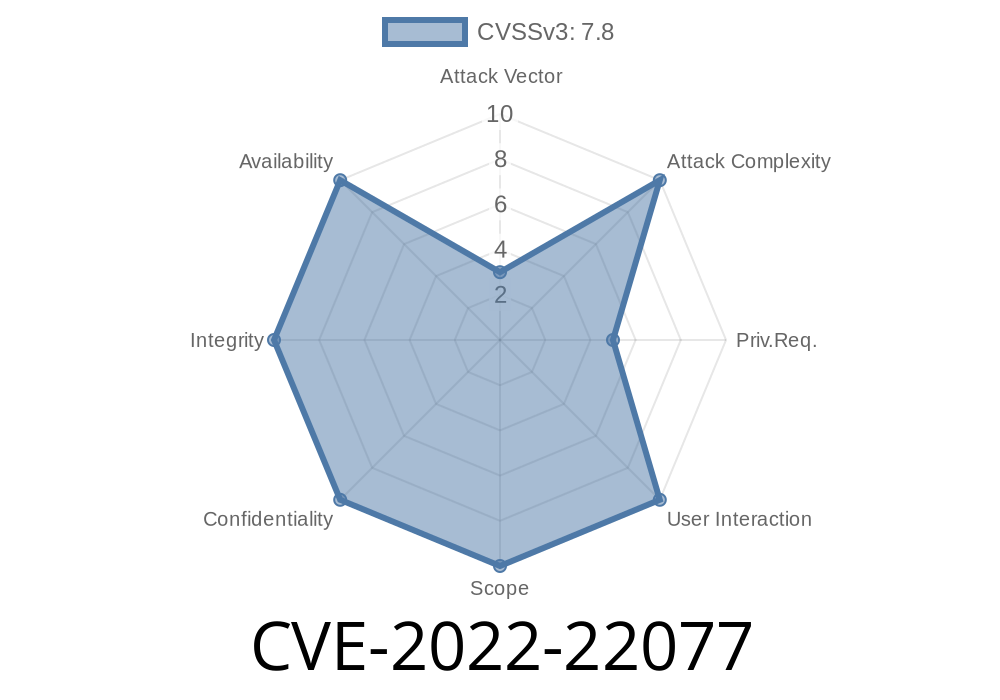The Common Vulnerabilities and Exposures (CVE) system is an industry-wide tracker for software vulnerabilities that could lead to security breaches. CVE-2022-22077 is a recently documented vulnerability that targets Snapdragon Mobile platforms, potentially leaving millions of smartphone users at risk.
In this in-depth look into CVE-2022-22077, we will examine the cause of this critical vulnerability – memory corruption in graphics due to use-after-free in the graphics dispatcher logic in Snapdragon Mobile. We will explore the underlying issues, demonstrate code snippets, provide links to original references, and share crucial information about potential exploits.
Background
Qualcomm's Snapdragon is a widely used mobile processor found in many smartphones, tablets, and other devices. The graphics dispatcher logic is an essential part of the Snapdragon Mobile stack, handling the communication between the GPU (graphics processing unit) and the main memory for graphical data processing.
The issue at hand in CVE-2022-22077 is memory corruption due to use-after-free vulnerability in the graphics dispatcher logic. Simply put, when an object in memory is freed but is still being referenced by the software, it can lead to unexpected behavior or even security breaches.
Exploit Details
The use-after-free vulnerability in Snapdragon's graphics dispatcher logic results from improper handling of the memory management. Specifically, the vulnerability can be triggered when an attacker manipulates certain data structures related to memory allocation for graphics processing.
To further illustrate the problem, let's review the following code snippet
//Example of use-after-free vulnerability in graphics dispatcher logic
typedef struct {
int data;
// ... additional members ...
} graphics_object;
void process_graphics(graphics_object *obj) {
// ... process the graphics object ...
if ( /* condition for freeing the object */
free(obj);
}
// ... more processing ...
}
In this code snippet, we see a structure called graphics_object, which represents data for graphics processing tasks. Within the process_graphics() function, the object is freed under certain conditions. However, additional processing continues after the free() call, potentially leading to the use-after-free situation and memory corruption.
For a more in-depth code analysis and additional specifics on this vulnerability, refer to the original references provided by the CVE documentation:
- CVE-2022-22077 - Official CVE website
- Snapdragon advisory - Qualcomm's advisory on the issue
Impact and Exploits
An attacker who is able to exploit this use-after-free vulnerability can potentially execute remote arbitrary code on the victim's device or cause system crashes, leading to a complete denial of service. By exploiting this vulnerability, malicious software or applications could access sensitive information and potentially compromise the security and integrity of the affected device.
Mitigations and Solutions
To address this vulnerability, device manufacturers and developers should update to the latest versions of the Qualcomm graphics software, as suggested in the Snapdragon advisory. It's crucial for users to regularly update their devices as well, to ensure they receive the latest security patches and avoid potential breaches.
Conclusion
CVE-2022-22077 is a critical vulnerability in the Snapdragon Mobile stack that exposes millions of devices to potential security breaches. By understanding the underlying use-after-free vulnerability and its implications, developers can better implement solutions and safeguards to protect users and mobile devices from such threats.
Remember always to stay vigilant and keep up-to-date with the latest software and security updates to ensure a secure and reliable mobile experience.
Timeline
Published on: 10/19/2022 11:15:00 UTC
Last modified on: 10/21/2022 20:18:00 UTC
